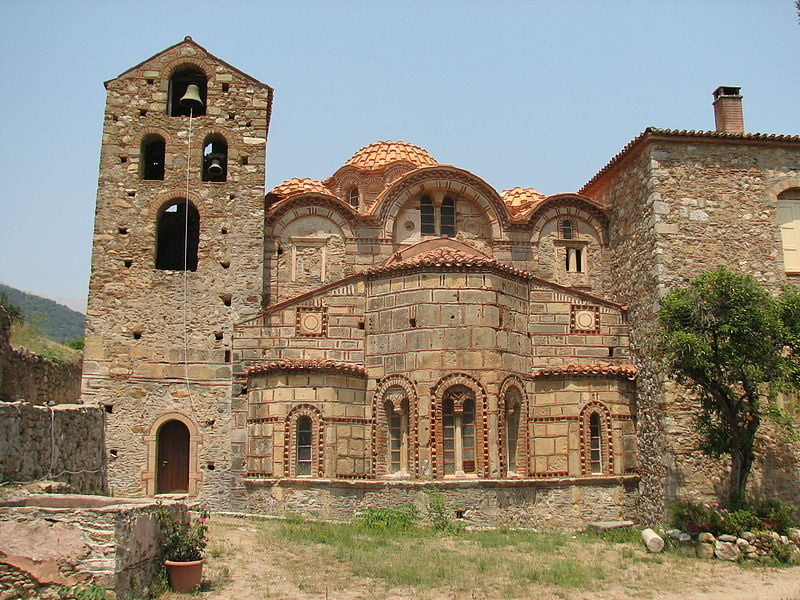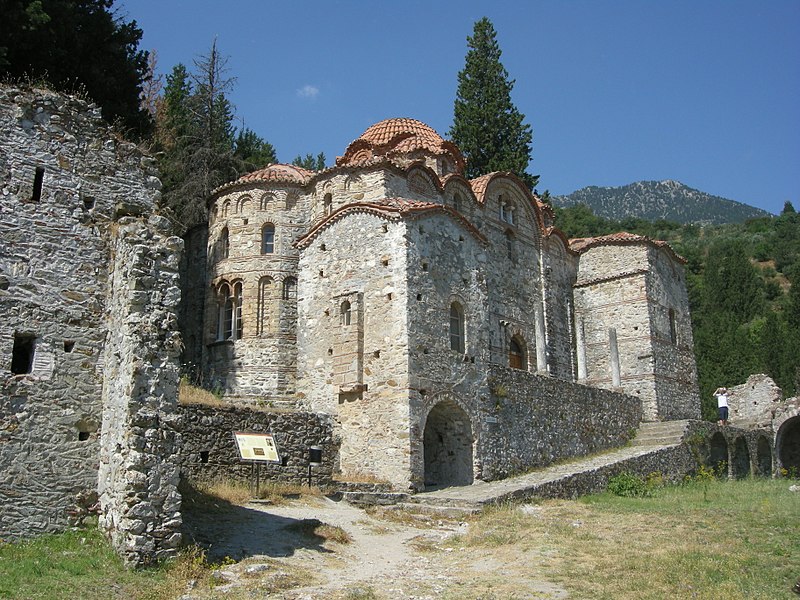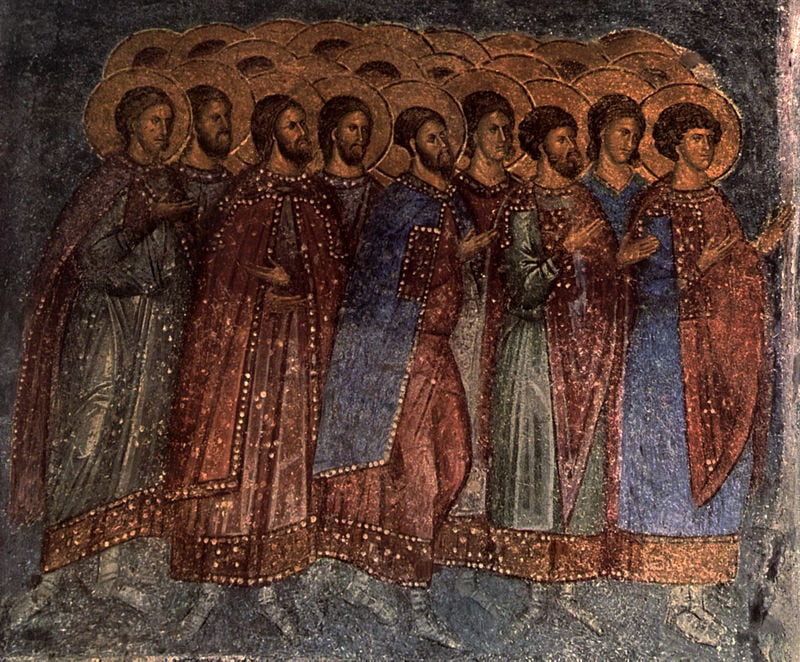
Mystras, known as the “wonder of the Morea,” which lies in the southeastern Peloponnesian Peninsula, was once the center of Byzantine power in southern Greece. The town was named a UNESCO World Heritage Site in 1989.
The town was largely abandoned in the late 15th century after the Ottoman Empire conquered the region. It remained uninhabited for centuries, contributing to its remarkable preservation.
It is set on a hillside, providing stunning views of the surrounding landscape. The town’s strategic location allowed it to control key trade routes and provide natural defenses.
As the center of Byzantine power, Mystras quickly attracted inhabitants and institutions; the bishopric was transferred there from Sparta, and its cathedral, the Metropolis or Church of Hagios Demetrios, was built after 1264.
In 1448, the last Byzantine emperor, Constantine XI Palaeologos, was crowned there.

Many monasteries were founded in Mystra as well, including those of Our Lady Pantanassa, and of Οur Lady Perivleptos.
Mystras reached its zenith of power and prestige during the time of the despots, with the building of magnificent churches which were outstanding examples of Late Byzantine ecclesiastical architecture.

Mystras: Byzantine architecture in Greece
Mystras’ unique architecture was influenced by the so-called “Helladic” school of Byzantine architecture as well as that of the great city of Constantinople. The paintings inside the churches reflect the quality and the eclecticism of the art of Constantinople.
However, elements of Romanesque and Gothic art are also present in Mystra’s churches as a result of the city’s wide range of contacts during the fourteenth and fifteenth centuries.

The beauty of its churches, which during the Palaeologan Renaissance were covered with magnificent frescoes, the renown of its libraries, and the glory of its writers gave substance thereafter to the legend of the “Wonder of the Morea.”
Great thinkers from Mystras include the philosopher Georgios Gemistos Plethon and his pupil, the intellectual Bessarion, later a cardinal of the Roman Catholic Church, who is responsible for bringing neo-platonic humanism to Italy.

Mystras is a truly outstanding example of the late Byzantine culture, which influenced the rest of the Mediterranean world and beyond.
Captured by the Turks in 1460, it was occupied thereafter by them and then by the Venetians.
After 1834, the inhabitants of Mystras gradually began relocating to the modern town of Sparta, leaving only the breathtaking medieval ruins, which still stand proudly in the beautiful landscape.
Strolling through the Kastro (the Frankish Castle), the Upper Town and the Lower Town, a visitor can visualize Frankish princes and princesses living in palatial mansions, foreign delegations arriving bearing gifts, and peasants, pilgrims and traders filling the bustling streets.
See all the latest news from Greece and the world at Greekreporter.com. Contact our newsroom to report an update or send your story, photos and videos. Follow GR on Google News and subscribe here to our daily email!



